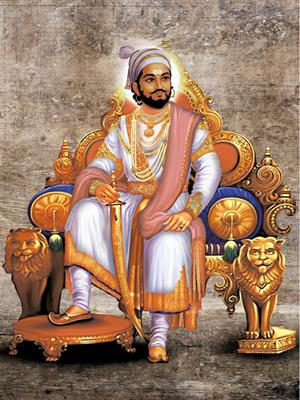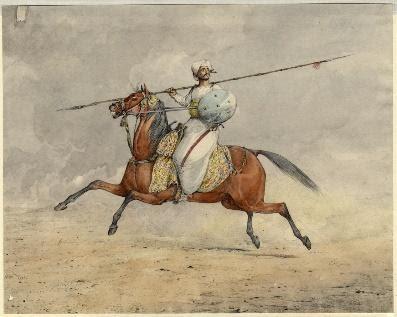
PUMPA - SMART LEARNING
எங்கள் ஆசிரியர்களுடன் 1-ஆன்-1 ஆலோசனை நேரத்தைப் பெறுங்கள். டாப்பர் ஆவதற்கு நாங்கள் பயிற்சி அளிப்போம்
Book Free DemoAdministrative setup under Shivaji
- The Administration of Maratha state under Shivaji was designed similar to the setup of Deccan Sultans. He appointed Hindus in high category posts and made Marathi their language.
- Most of the administrative ideas of Shivaji established was inspired by Malik Ambar of Ahmednagar.
- Three basic principles are considered as the basic features of Shivaji’s administration. They are,

Central administration of Shivaji

Shivaji in his throne
- Shivaji divided the entire area of his territory into three categories of Provinces namely, Prants, Parganas and Tarafs, each of which was kept under the direct control of the viceroy who in turn are accountable to the King.
- His administration was highly centralised, and he was assisted by a group of “eight ministers or the Ashtapradhans”. Each of the ministers was assigned with a department who has to take care of it and the King was at the top of the authority.
THE ASHTAPRADHAN
2. Majumdar – controller of revenue and finance.
3. Waquia Navis – Intelligence department.
4. Surnavis / Chitnis – Royal Correspondence.
5. Senapati - Military Commander.
6. Nyayadish – Justice department.
7. Panditarao – Religious and Charity department.
8. Sumant / Dabir – Master of Royal ceremonies, foreign affairs.
- During the latter part of the rule the Peshwa became all-powerful and was considered as the De facto ruler of the state, and except the Panditarao, and Nyayadish all the others have to serve the army of the state in case of emergency.
Rural administration
The rural part of the Maratha empire was controlled by the Deshmukh, who had control over fifty villages. The Villages were headed by “Patil” and they were assisted by “Kulkarni’s (record keepers)”. The rural government functioned in a proper sense even in the absence of the Central power.
Revenue Administration:
- Shivaji during his reign abolished the system of “Jagirdars” and replaced it with the “Ryotwari system”. The ruler also kept checking on the “Mirasdars – who had hereditary control over the land.
KATHI SYSTEM: This was the revenue system practised during the period of Malik Amber, which was later adopted by Shivaji during his reign.
- Other sources of income include the taxes, which were levied by the king, two taxes were laid during the Maratha period.
Chauth – 1/4th\ of the for protection his subjects in Non-Maratha territories.
Sardeshmukh – 1/10th of the revenue demanded from Chieftains.
Military under Shivaji
- Shivaji gave high importance to the Military under his rule, he had an organised and disciplined army with various layers. The Soldiers were trained in mountainous warfare methods and a unique fight technique named “Guerrilla fight (Hide and ambush)”.

Maratha Horsemen
- The Maratha army contained “Infantry (mostly with Mavali foot soldiers), Cavalry and Navy”, to ward off threats from the sea.
PINDARIS: They are tribals of areas around the Maratha Kingdom, who are known for their ruthless methods of killing and plundering. They also served as a part of the Maratha army.
- The normal soldiers of the army were paid in cash, and the higher officials of the army were paid with Ryots or lands.